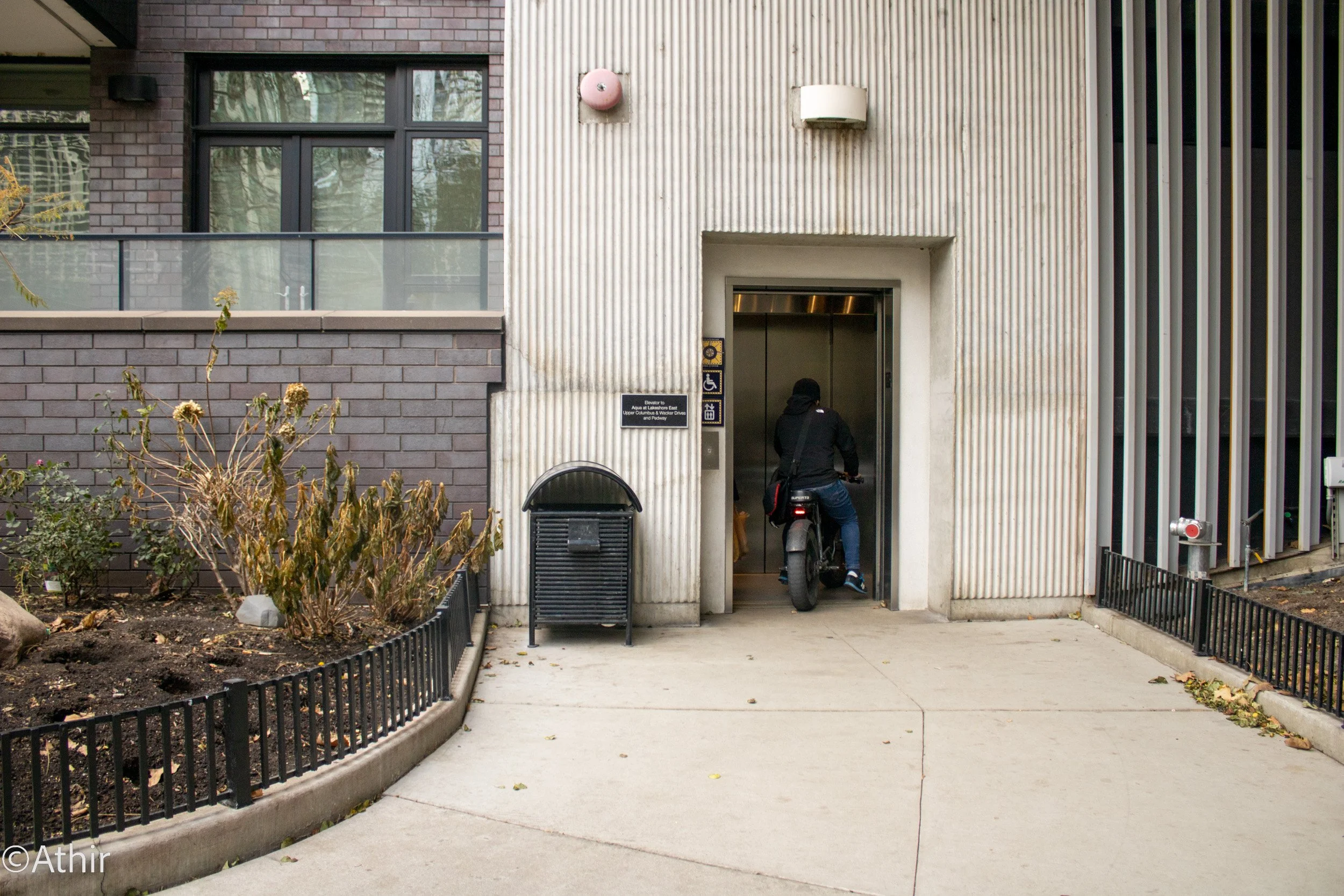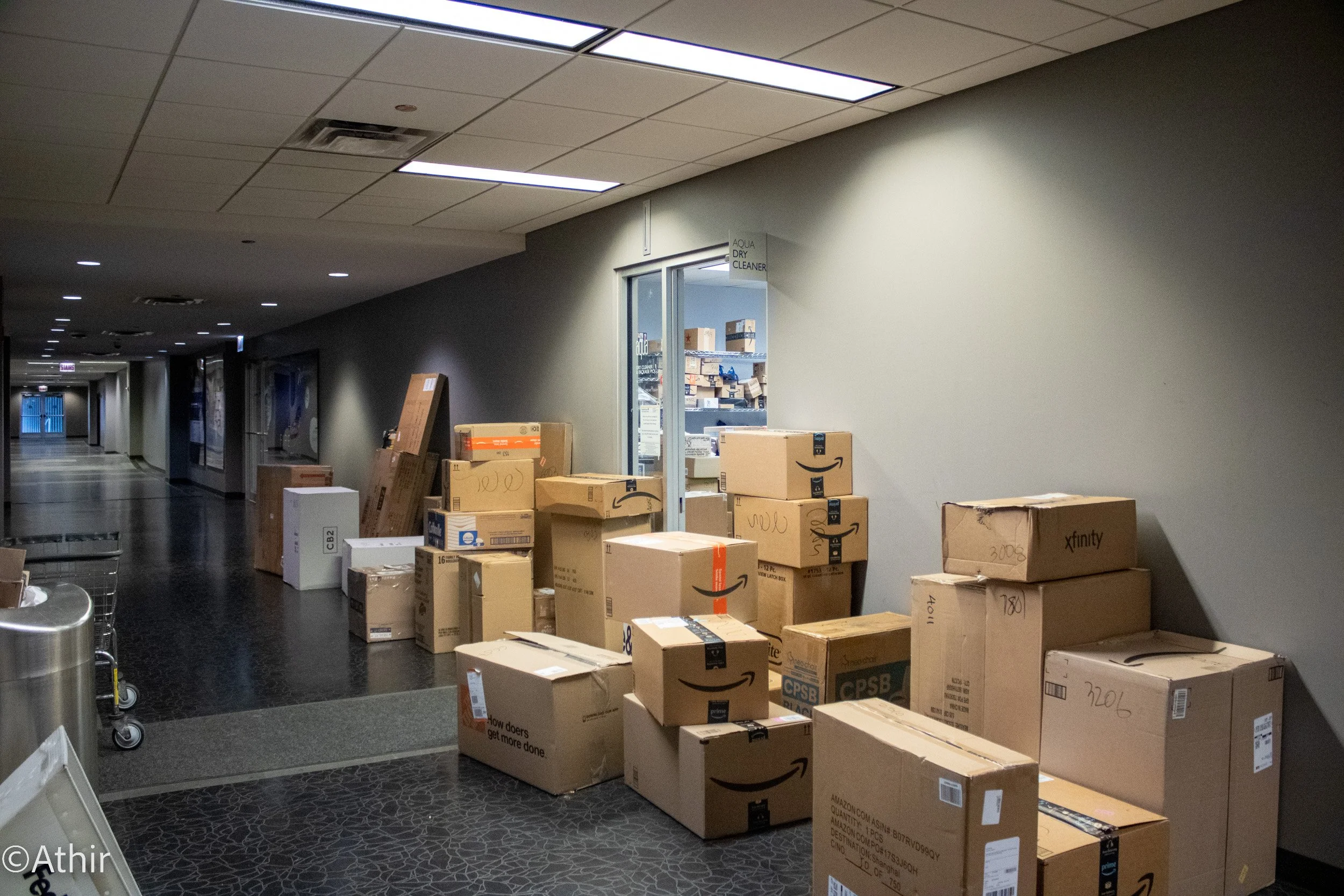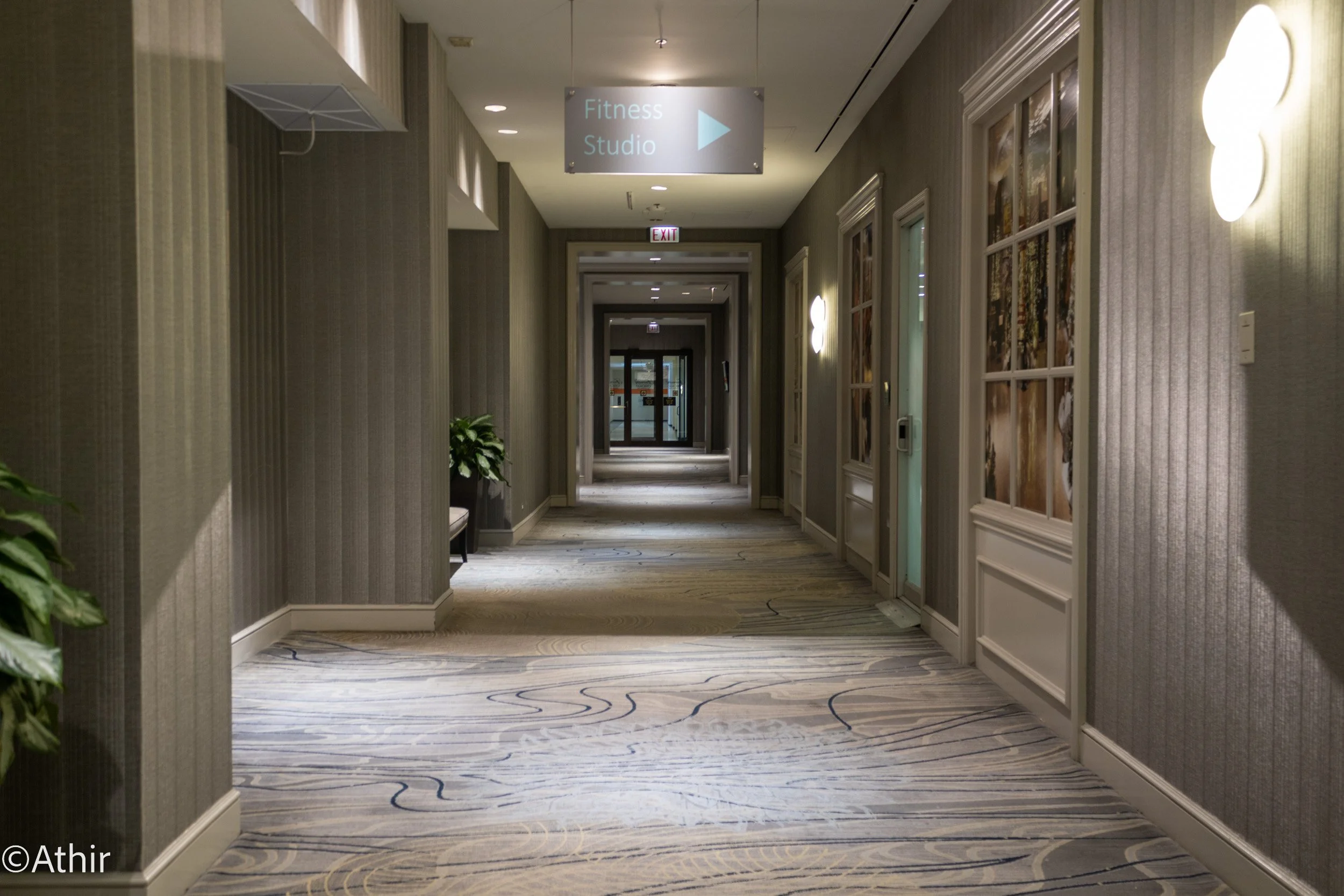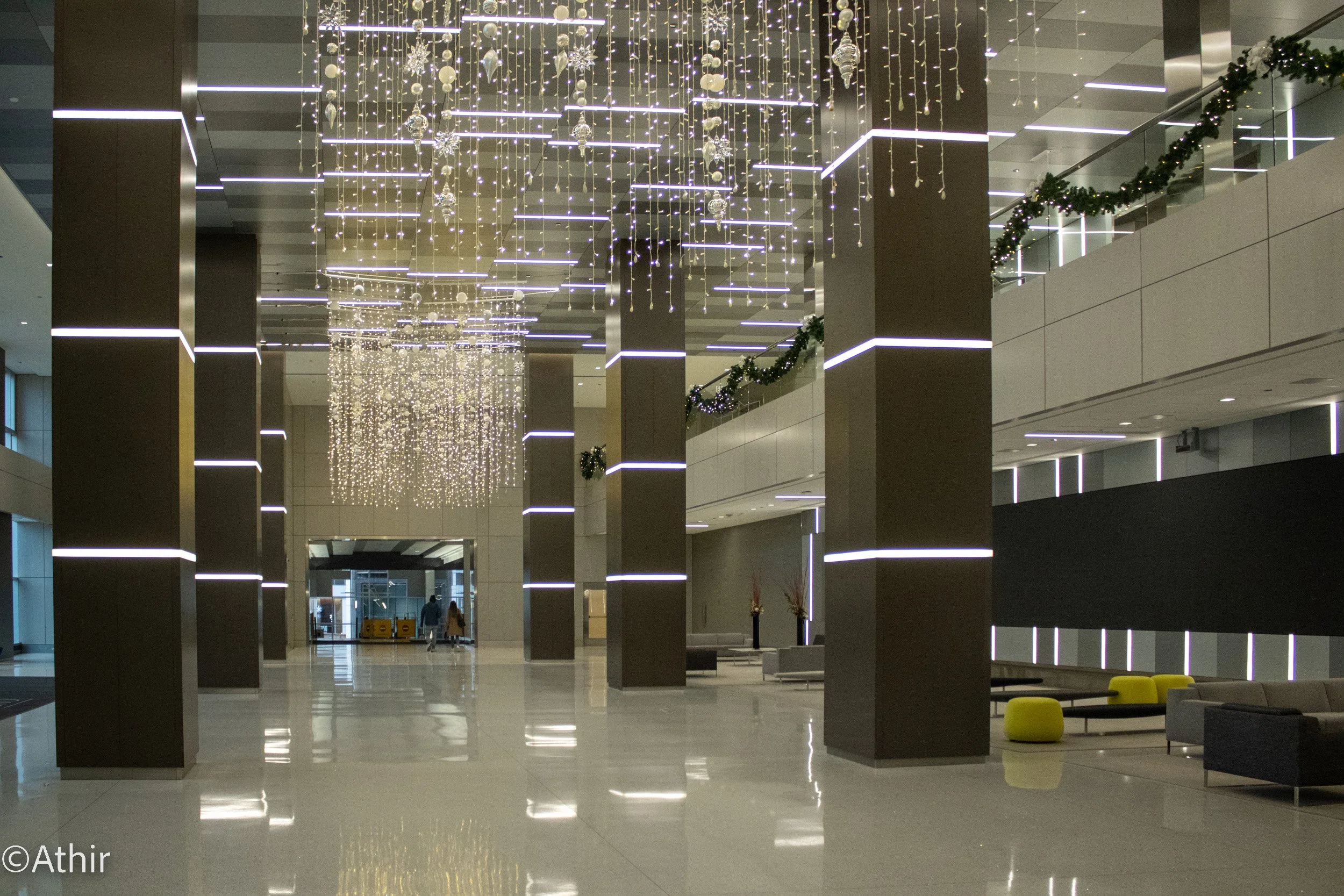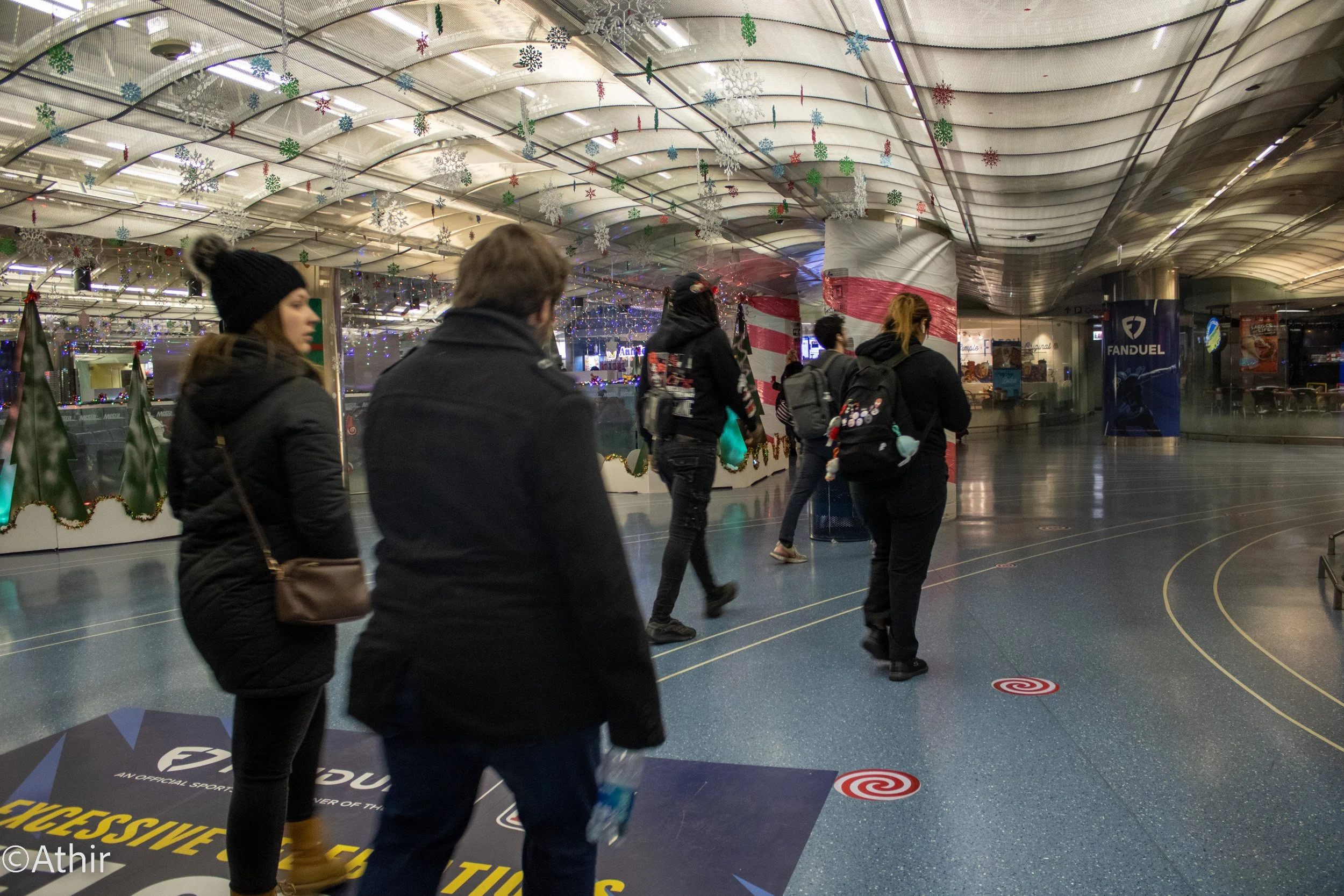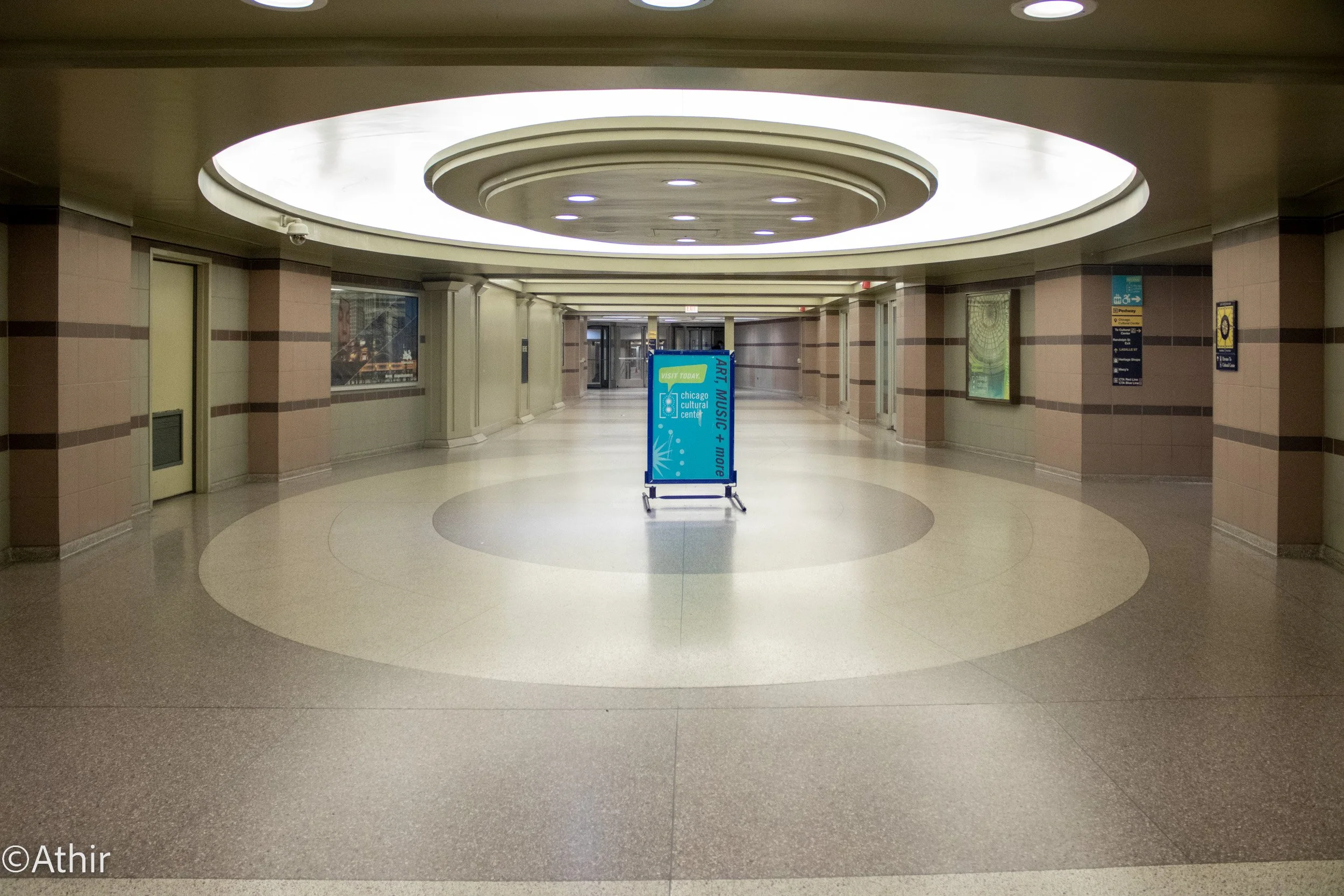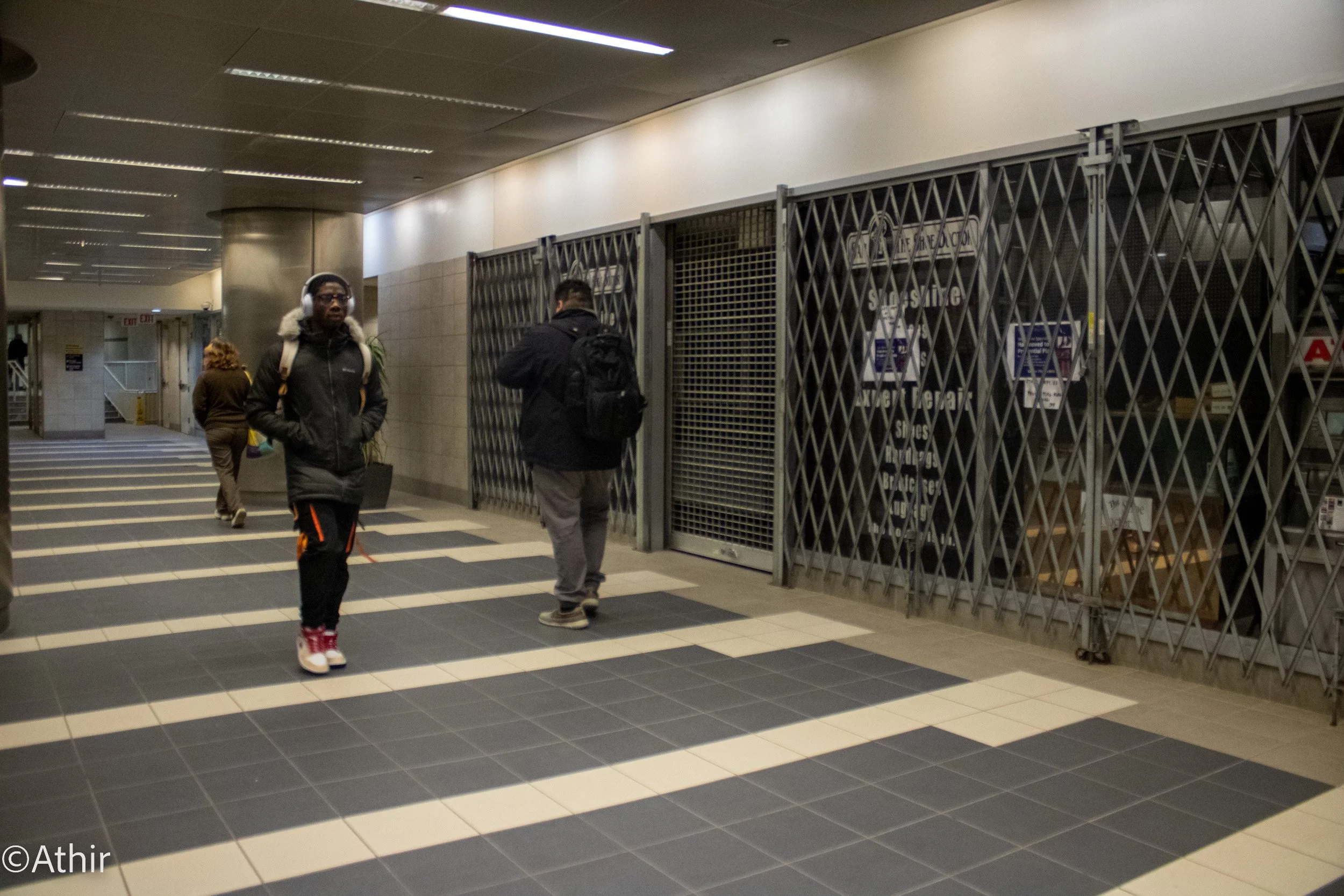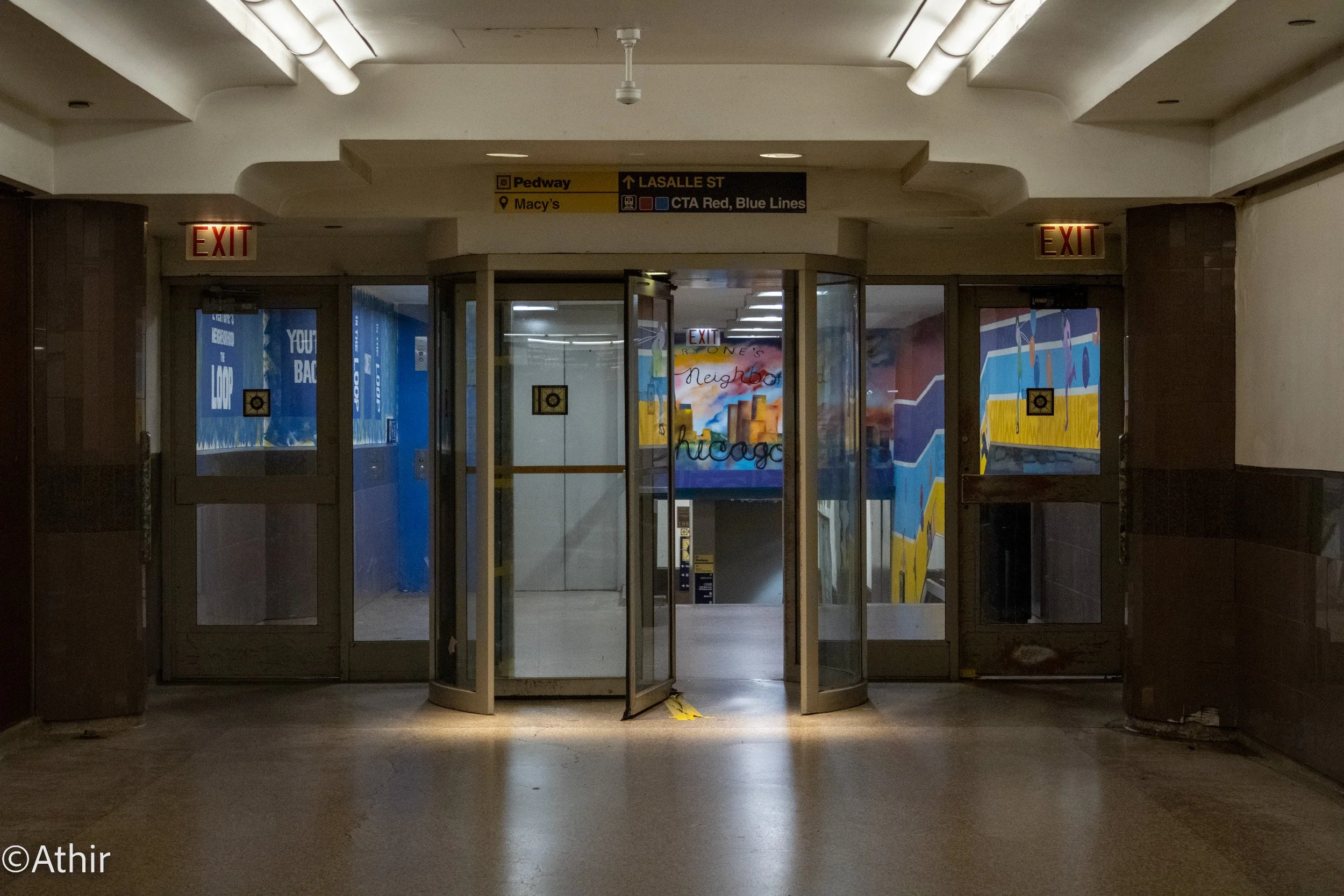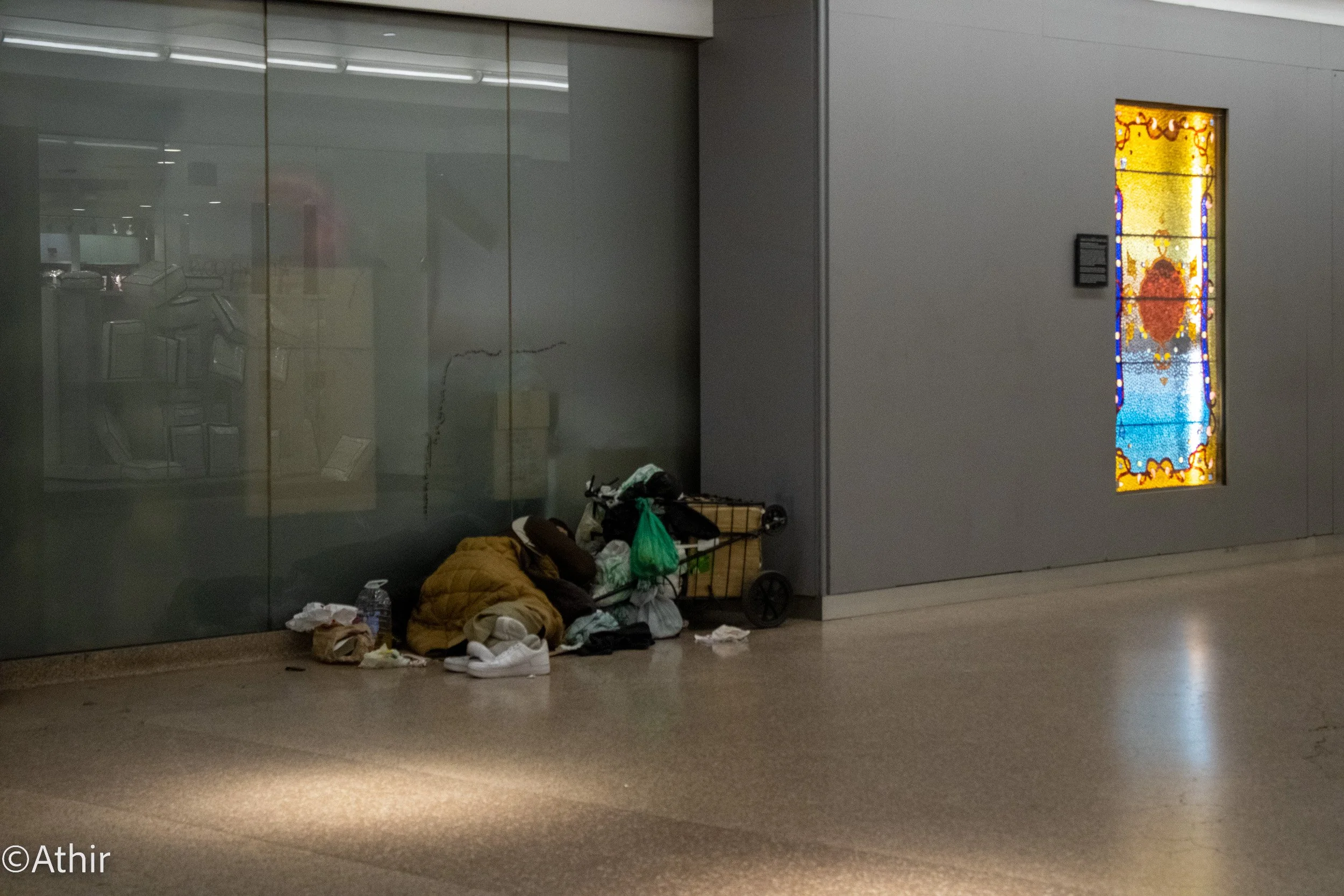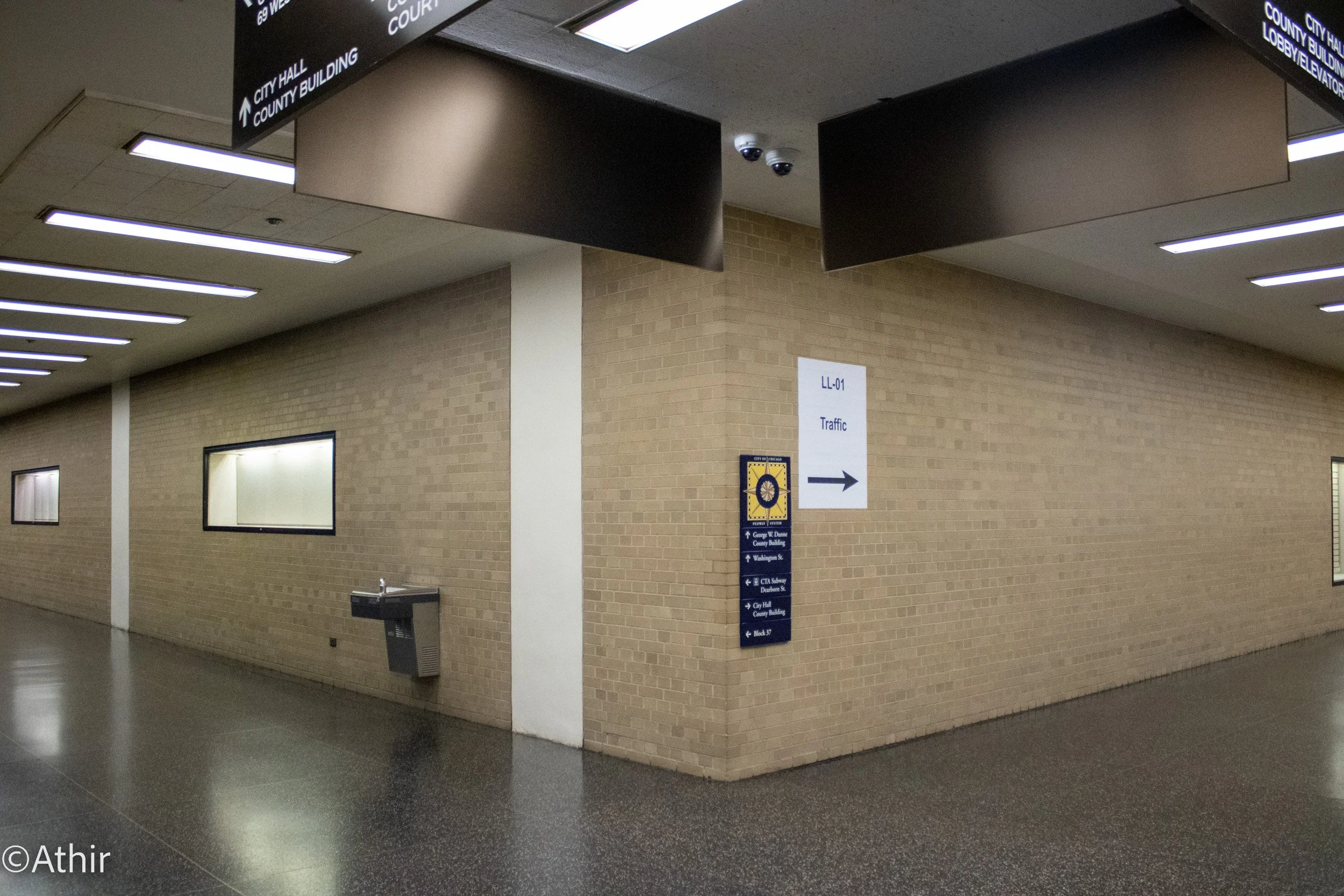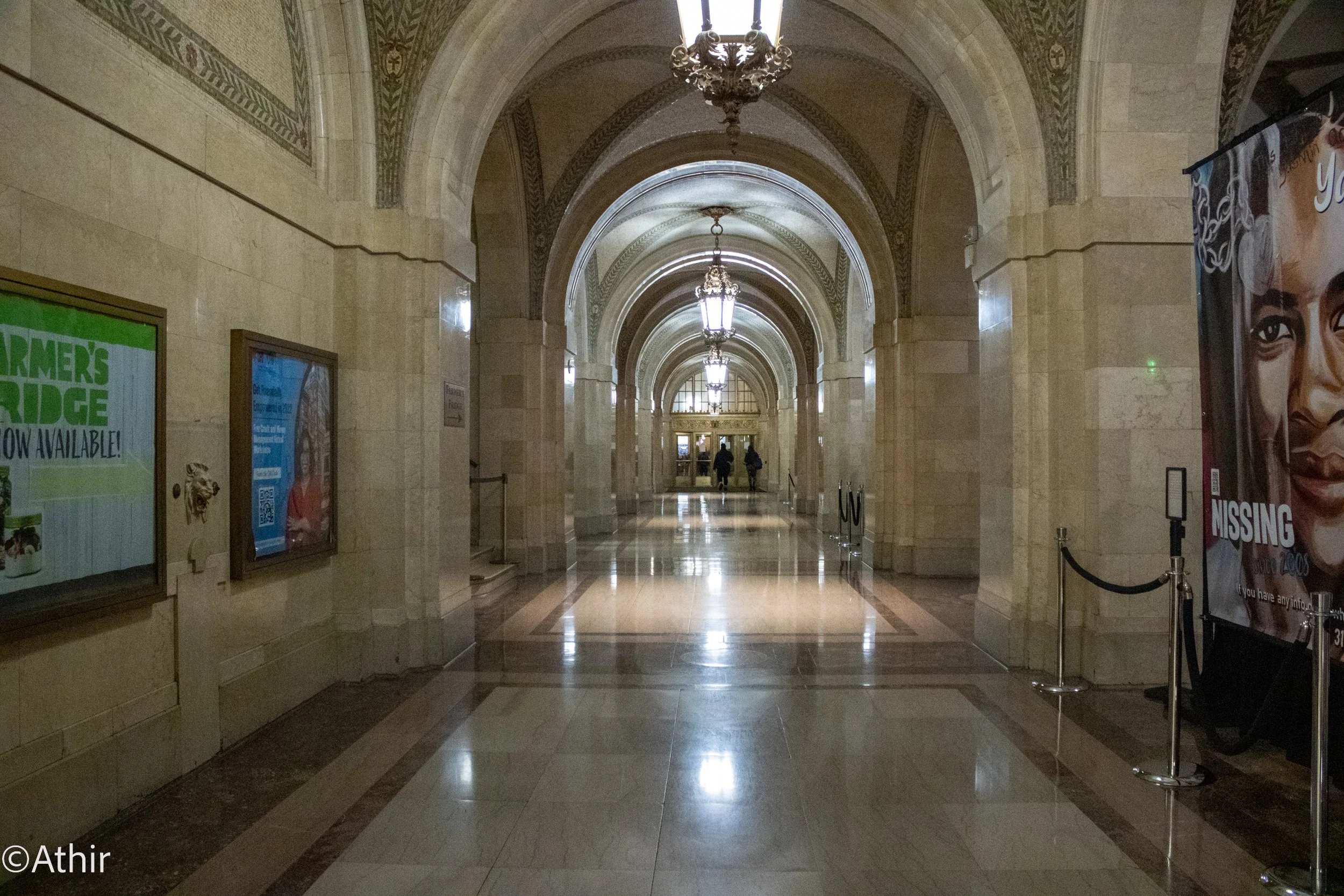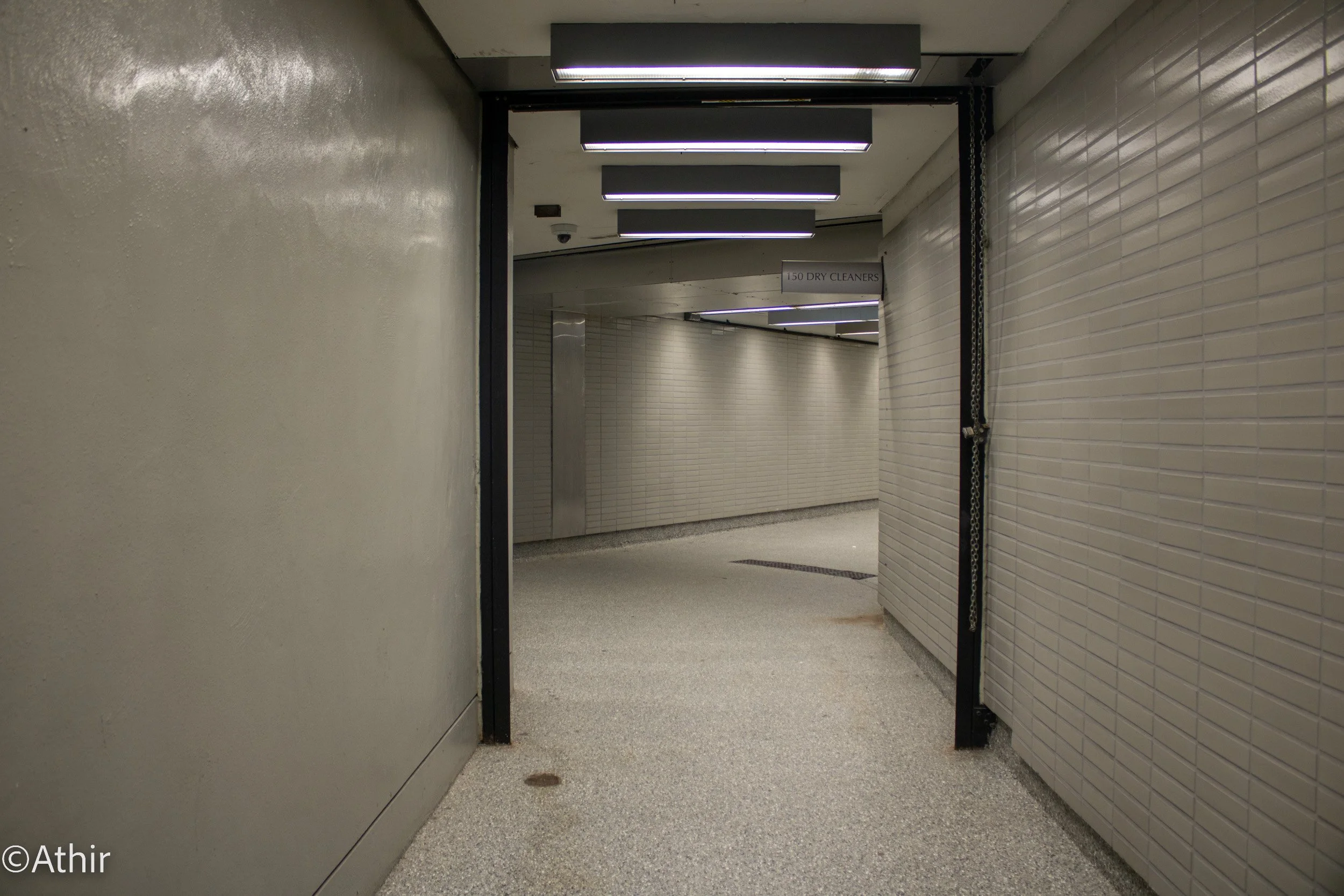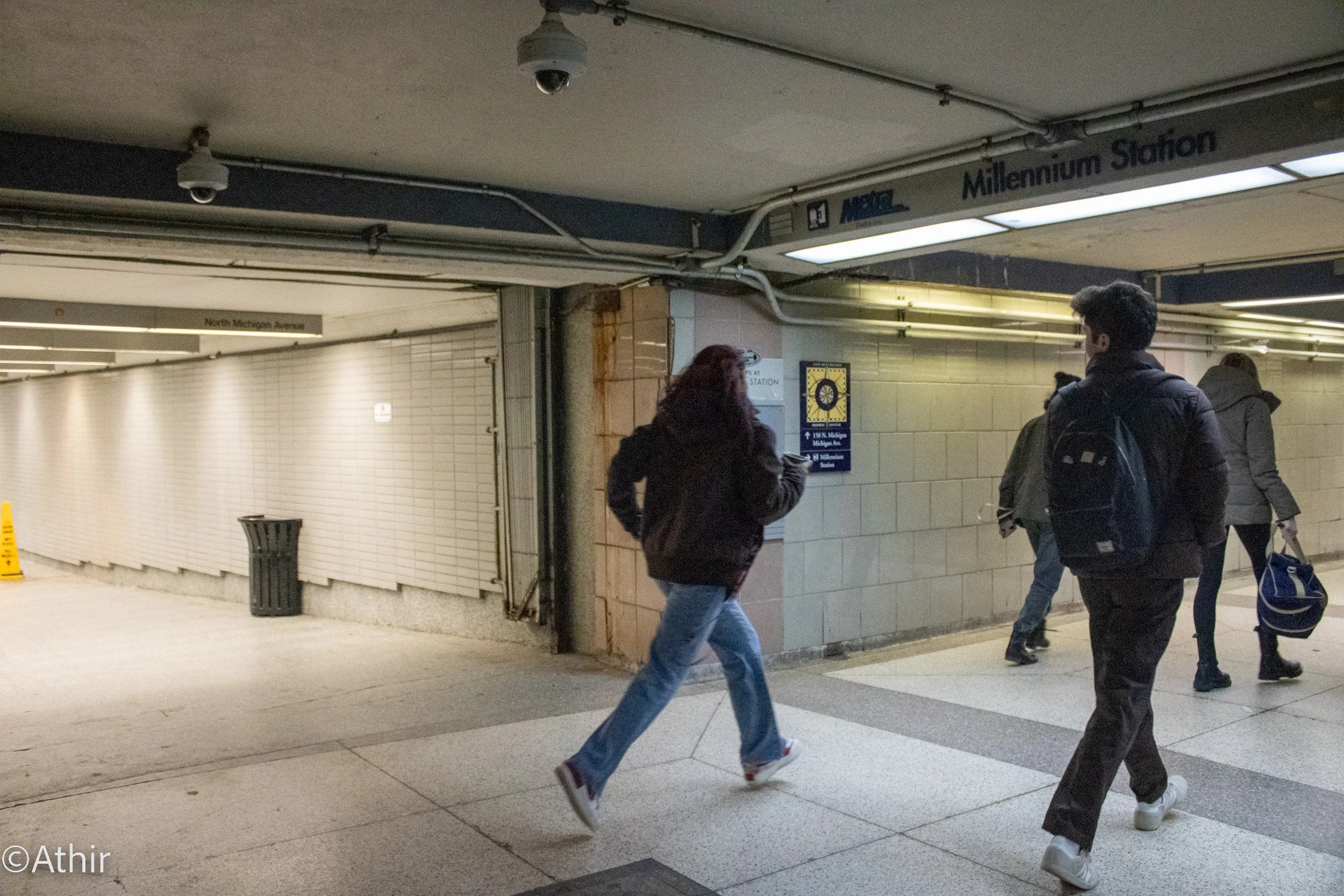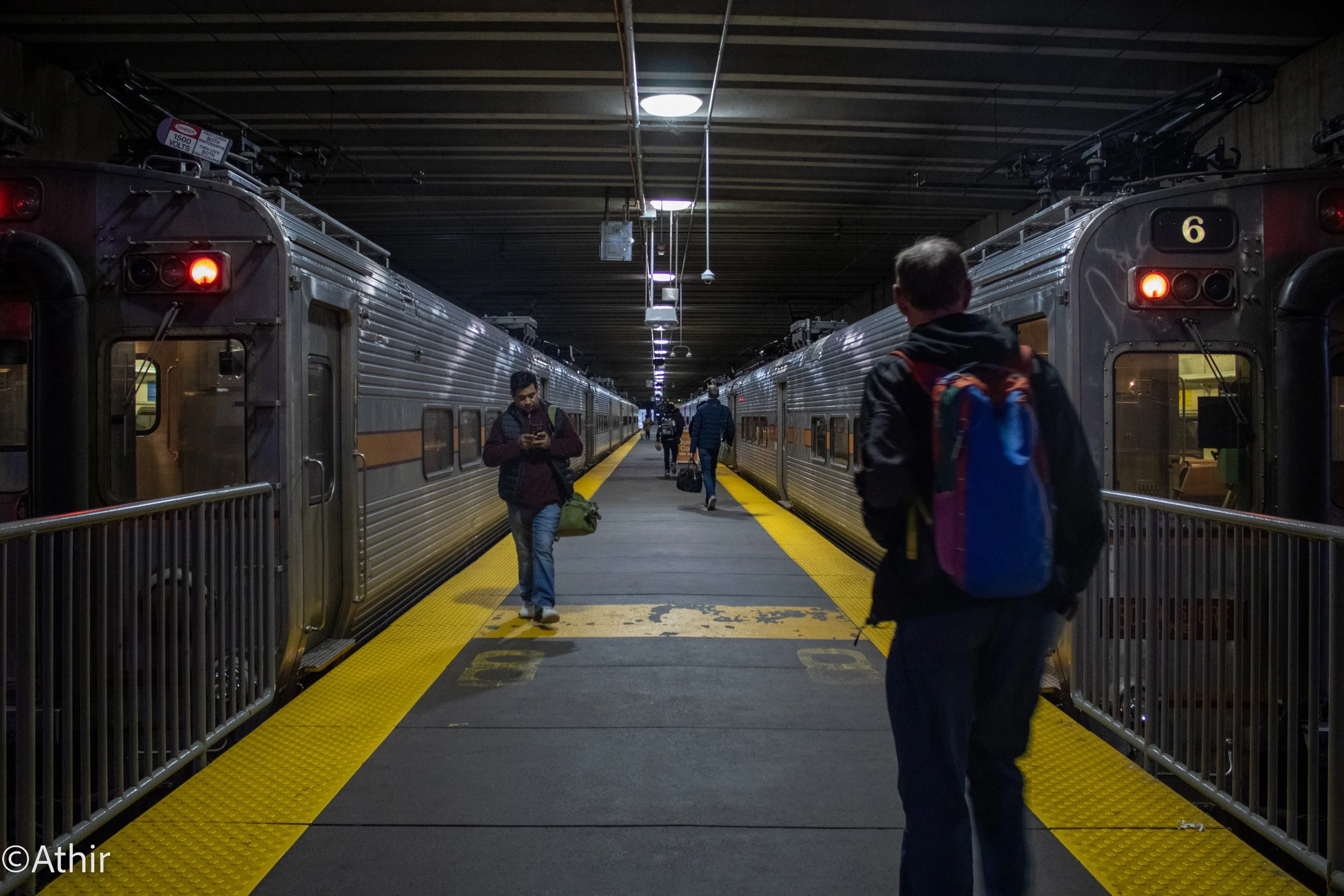NARRATIVE PROJECTIVE FOR GRADUATE STUDENTS
THE PEDWAY:
Chicago’s Secret, Solitary, Symmetry-Centric, Subterranean System
(all images below can be clicked to be enlarged)
1. Lakeshore East Pedway Entrance
A motorcyclist enters the Pedway System using the Lakeshore East elevators, the eastern most entrance Friday, Dec. 2, 2022. Chicago, IL USA. Photo by Athir.
1/100 sec (f/3.5 ISO 100, 18 mm)
2. Aqua Residential Package Drop-Off & Cleaners
Mostly deserted, the Pedway hallway outside Jeanne Gang's Aqua Highrise Residential Package and Cleaners only receives visits from delivery personnel who leave packages outside the back entrance as the occasional pedestrian walks by Friday, Dec. 2, 2022. Chicago, IL USA. Photo by Athir.
1/100 sec (f/3.5 ISO 3200, 18 mm)
3. Corridor Between Highrises
The corridor between the Aon Building and the Fairmont Hotel is mostly unknown and underutilized by pedestrians, with tailored walls and carpeted floors Tuesday, Nov. 29, 2022. Chicago, IL USA. Photo by Athir.
1/30 sec (f/4.5 ISO 100, 24 mm)
4. One Prudential Plaza Lobby
Although part of the Pedway, many pedestrians avoid the lobby of One Prudential Plaza due to its stark, ornate difference to the remainder of the System Friday, Dec 2. 2022. Chicago, IL USA. Photo by Athir.
1/250 sec (f/3.5 ISO 1600, 18 mm)
5. Millenium Station
Known for Batman riding his motorcycle through its winding corridors and past its bustling cafes in Dark Knight, Millenium
Station is flooded with commuters, diners, and locals dodging the inclement weather during rush hour and to get to their subways and rails Friday, Dec 2. 2022. Chicago, IL USA. Photo by Athir.
1/60 sec (f/3.5 ISO 800, 18 mm)
6. Chicago Cultural Center
Just a few steps away, a more isolated hallway just below Chicago Cultural, includes a lit rotunda, mirroring the world's largest Tiffany dome, a few stories directly above it Friday, Dec 2. 2022. Chicago, IL USA. Photo by Athir.
1/160 sec (f/3.5 ISO 1600, 18 mm)
7. Post-Pandemic Reality
Odd variations within the Pedway continue as passageways filled with shops see Loop/downtown workers rush home after the workday Friday Dec 2. 2022. Chicago, IL USA. Photo by Athir.
1/160 sec (f/3.5 ISO 1600, 18 mm)
8. Revolving Doors & Murals
Doors, especially revolving doors, transition different areas or buildings in the Pedway. A mural can be seen beyond the revolving doors to cover an older portion of the stairwell Friday, Dec 2. 2022. Chicago, IL USA. Photo by Athir.
1/80 sec (f/5 ISO 1600, 44 mm)
9. In Plain Sight
Just around the corner, an unsheltered person sleeps next to a stained glass exhibit in a lower-traffic area, but still utilized portion of the Pedway Friday, Dec 2. 2022. Chicago, IL USA. Photo by Athir.
1/80 sec (f/5 ISO 1600, 43 mm)
10. Forks In the Road
Many portions of the Pedway fork off into different directions but offer few visual cues and are thus avoided even during the height of rush hour, however convenient Friday, Dec 2. 2022. Chicago, IL USA. Photo by Athir.
1/100 sec (f/3.5 ISO 3200, 18 mm)
11. City Hall
Walking through City Hall means walking part of the Chicago Pedway, but this also tends to be less known and also therefore, avoided Friday, Dec 2. 2022. Chicago, IL USA. Photo by Athir.
1/100 sec (f/4 ISO 6400, 18 mm)
12. Empty Hallways
Hallways leading to some streets have almost no foot traffic in the Pedway, even during rush hour, denying some pedestrians of convenient shortcuts Friday, Dec 2. 2022. Chicago, IL USA. Photo by Athir.
1/30 sec (f/3.5 ISO 100, 18 mm)
13. Randolph Street Station
Commuters rush to make their scheduled trains during rush hour at the Randolph Street Station Friday, Dec 2. 2022. Chicago, IL USA. Photo by Athir.
1/200 sec (f/3.5 ISO 3200, 18 mm)
14. Commuters End Their Day
Commuters coming back home into the city or leaving the Loop/downtown area and heading into various parts of the city and Indiana by using the Pedway to get on and off the electric rail system to end their day Friday, Dec 2. 2022. Chicago, IL USA. Photo by Athir.
1/50 sec (f/3.5 ISO 800, 18 mm)
REFLECTION
Few people know about Chicago’s Secret Underground City and even fewer have the know-how to navigate it. Consisting of a series of underground tunnels, walkways, and bridges, the Pedway connects subways, underground railway stations, highrise buildings, hotels, eateries, and a variety of businesses. The Pedestrian Walkway System, or the Pedway offers respite from the heat and humidity the summers, and snow, cold, and wind throughout the long, infamous winters. The transitions between older and newer portions vary but mostly, there are stark differences between places that are massively busy where people are rushing to get to where they need to be or dining in cafes, versus areas and blocks where there is not a soul to be seen, often with forks in the road without proper guidance.
My narrative surrounds the manner in which people use the Pedway System during the evening rush hour and the striking contrast of the number of people in various parts of a small portion of the Pedway, often within 1-2 blocks. This difference noted, during a busy time, creates the backdrop for the narrative, where there seems to be a correlation with sections of the Pedway which are either old and run down or portions that appear overly ornamental or extravagant being avoided.
From a technical perspective, I struggled with my camera. I am usually unable to get my f-stop lower than than 4.5. Even the ISO options are very specific, going no lower than 100, and with very hard options at 100, 200, 400, 800, etc. I did have to deal with low light but I was able to make some modifications. I do wish I had a wide lens to be able to capture certain scenes that were not possible with my lens. There was a lot of motion, so I took advantage of those shots where there was enough light. I had to try to keep my shutter speed high enough to prevent blur but low enough to prevent my photos from being underexposed, but increasing my ISO did help in some situations, as I chose not to use a tripod. Some post-production, auto-adjustments and exposure adjustments were necessary in Lightroom. All images were adjusted for white balance and some required that horizon and vertical lines be straightened. No images were cropped to maintain integrity. For the captions, I used the guidelines offered by the Associated Press, as provided in the course early in the semester.
Note: One photo — #3 — was taken a few days before on Nov. 29, and I do have an exact photo from around the same time Friday Dec 2, but when I went to reshoot my set, this was a much better photograph and neither had a high chance for people coming into frame. I have evidence, if need be. I realize it may download out of order, due to date.
The main reason I took this course was to understand photography because I teach DGMD E-50 - Introduction to Visual Communication Design at Harvard Extension and I had no concept of the terms shutter speed, ISO, or f-stop when briefly discussing them in my classes. I now feel more confident in using and understanding these tools and may consider upgrading to a better quality camera. I also hope I gave people a better sense of what a great city Chicago is.

